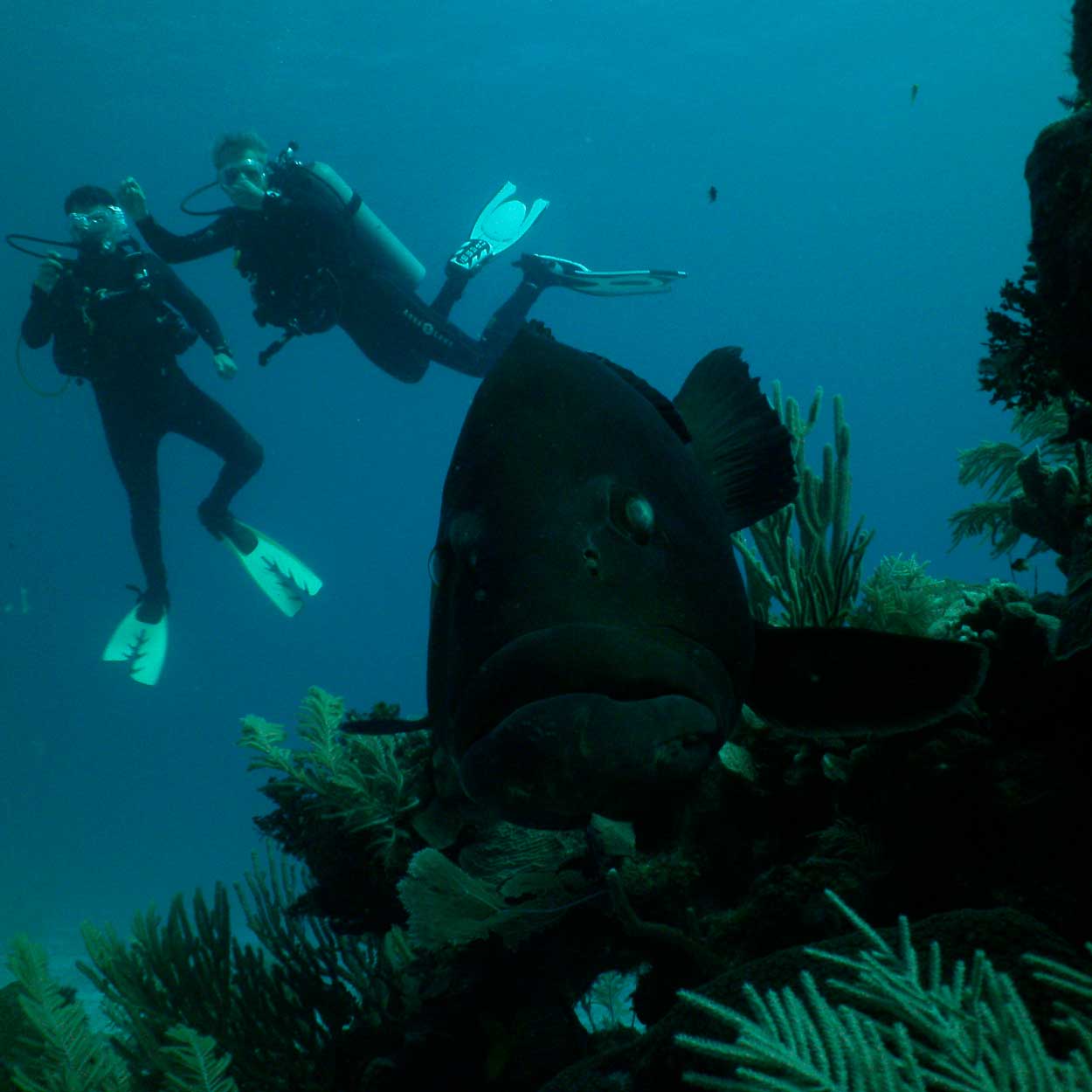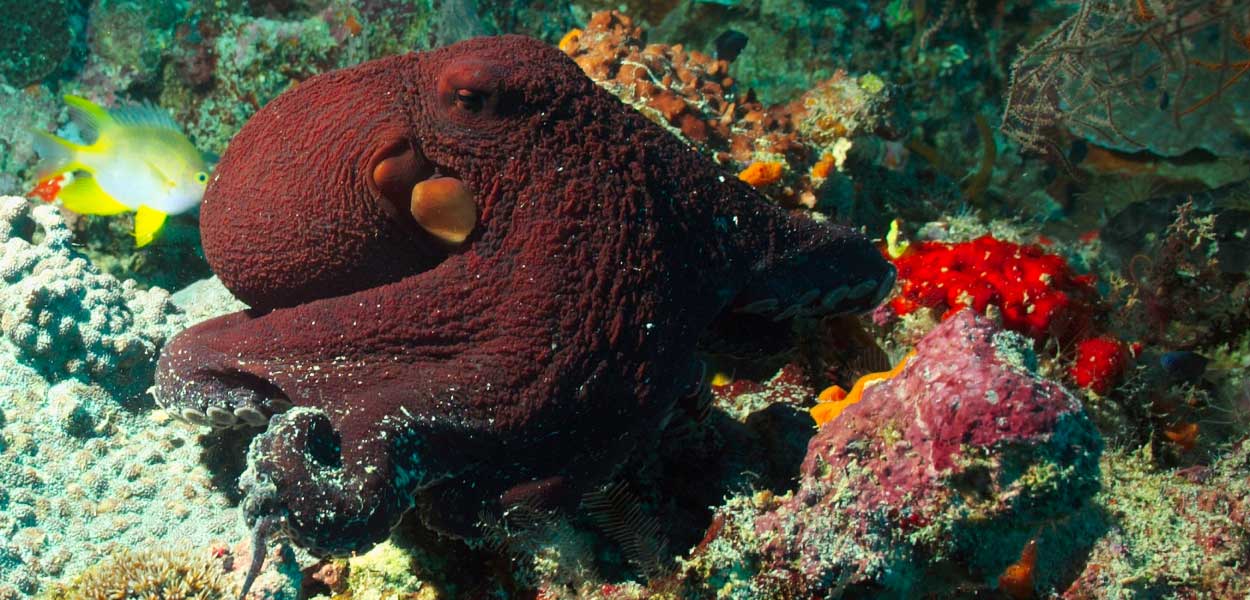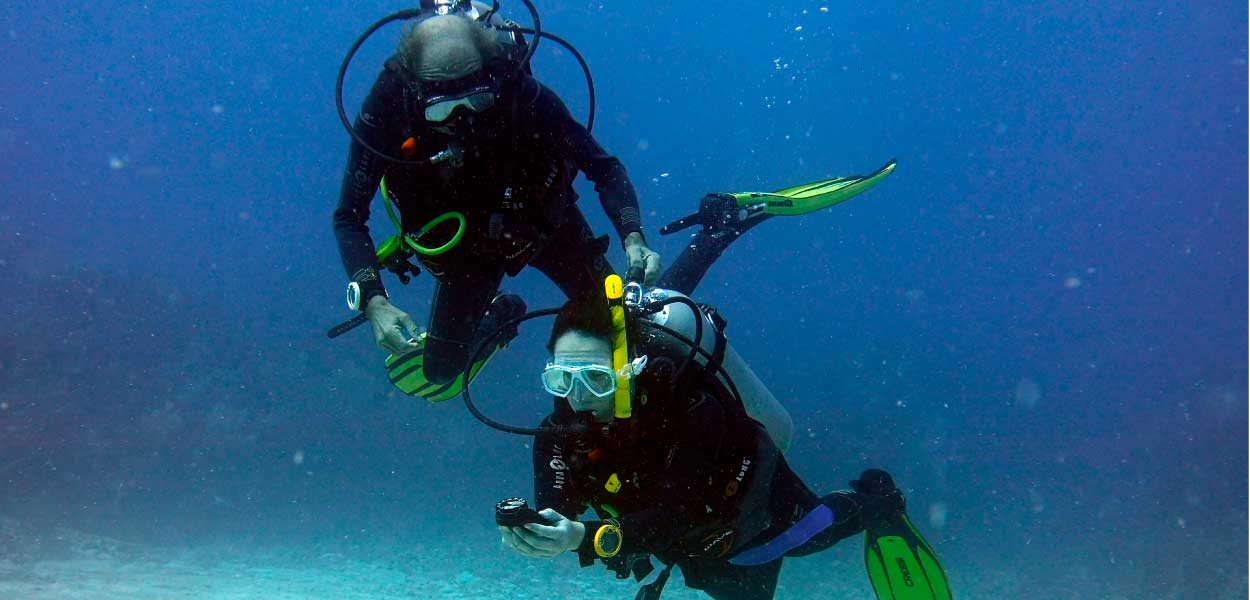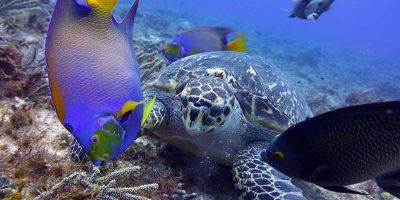Discover why scuba diving enthusiasts consider this location a diving haven.
Imagine a scuba diving tour or course based in the crystal-clear waters of Akumal, Tulum, or Cozumel, what a dream… These locations are considered the finest destinations of the Riviera Maya and one of the best ways to spend your vacation, learning and refining your diving skills in the Caribbean Sea besides our stunning oceans; the Riviera Maya and Yucatán Peninsula are also home to an incredible underground water system filled with magnificent caves and cenotes, these hidden gems are just waiting for you to explore them.
An important part of our oceans is that the Mexican Caribbean Coast is part of the marvelous coral reefs famously known as el Sistema Arrecifal Mesoamericano (Mesoamerican Barrier Reef System) which stretches for over 625 miles (1005 km) along the coasts of Mexico, Belize, Guatemala, and Honduras.
Blue Experience Diving offers you first-class service in the Riviera Maya, we're ready and waiting for you to help you explore the wonders of the coral reefs and the underwater world of the Caribbean.
Here you have 10 reasons why the Riviera Maya is one of the best Scuba Diving Destinations:

1. Riviera Maya's Best-Kept Secret: Reef Diving Adventures
Cozumel is a beautiful island located off the coast of the Yucatán Peninsula in Mexico, known for its stunning beaches, and of course the vibrant coral reef. This island is a renowned diving destination due to being home to the second-largest barrier reef system in the world: The Mesoamerican Reef, which provides a home to a diverse array of marine life. Fortunately, this reef system is very close to the shore along the Riviera Maya, it also holds National Marine Park status meaning this natural wonder is a protected area. Within the area we can see more than 14 species of multicolor hard corals; we can also find turtles,Nurse Sharks, eagle rays, barracudas, and a stunning variety of fish and mollusks.
It's very important for us to highlight the fact that coral reefs are some of the most diverse and important ecosystems on earth, they provide a home for over 4,00 species of fish and various underwater flora and fauna, and they also provide protection from shore erosion and support economic activities to almost 500 million people around the world, from fishing to numerous water sports, including Scuba Diving. Water-based tourism is a vital form of income in many countries around the world, an example, Blue Experience Diving in the Riviera Maya. It is vital that we become part of the people moving towards protecting this wonderful natural resource, for the good of our environment, so that future generations can continue to enjoy it, and for the growth of the economic benefit of the local resident population. For this reason, when you are out there exploring and diving, we ask that you respect the reefs, and avoid touching them as they are fragile and can be damaged very easily, thus affecting the ecosystem of the Mexican Caribbean Sea for many years.

2. Magical Encounters with Turtles
The name “Akumal” comes from the Mayan word that literally means “Place of Turtles”, this name is pretty spot on because, at Akumal, we have a large resident population of Green Sea Turtles, some Hawksbill Turtles, and in the breeding season, Loggerhead Turtles inhabit the ocean. The local area is a major nesting site for these turtles, and it is common to see them on the beaches late at night during nesting season as the females leave the water to deposit their eggs on the beaches.
The experience of diving with these wonderful creatures is one not to be missed and should be shared with all the family when you scuba dive with us here at Blue Experience.
Over the years, divers have explored the waters surrounding these magnificent creatures, and so over time they have gotten used to us, having had many close encounters almost on a daily basis. However, it is important to remember that we are just visitors in their world, and we must respect the environment and ensure we do not attempt to interact with them. We leave it up to them to decide if they want to get to know us but we still need to remember to give them their space and not touch, chase or in any way harass them. Before diving into Akumal Bay, we’ll give out some simple rules to follow when we see these magical animals, thus avoiding putting any stress on them, this way we can all continue to see the turtles in their natural habitat and enjoy the experience.
Don’t miss this amazing opportunity of diving with turtles in the “place of turtles”!

3. Exploring the Depths – Deep Diving
Only 14 miles (22 km) from Playa del Carmen and 20 (32 km) from Akumal there’s a ring of coral reefs known as “Gran Arrecife Maya” which rise close to the surface creating a shallow “lagoon” around the island of Cozumel. This location has become a popular destination for deep diving, thanks to its coral gardens and beautiful formations, it has year-round warm waters, and marvelous visibility which is regularly up to 150 ft (45 m) making it a must-do dive for any diving enthusiast.; With over 42.47 square miles of reef system protected by the “Parque Nacional de Arrecifes de Cozumel”
One of the highlights of diving in Cozumel is the opportunity to explore the magnificent coral walls, these walls allow for deeper dives, and the regular slightly strong currents create ideal conditions to witness the beauty of the coral gardens; The coral formations here are simply breathtaking, and the abundance of marine life is truly remarkable. From a diver's point of view, we highly recommend diving on Cozumel Island to any diving enthusiast looking for a unique and unforgettable experience.
In quite shallow waters we can find the giant barrel sponge, also named “madera roja del abismo” with an average life of about 230 years. During its long life, it filters water all day long and continues to grow, this species has been known to reach the size of a small car in diameter and several feet in height. On some of these sites in Cozumel, we also have good chances to come across the Green Moray Eel which gets its color from a mucus layer that covers this nighttime hunter of the coral reefs. During the day the Green Moray is quite shy, but still is more than capable of protecting itself if needed, from other predators or even overly inquisitive divers. Growing up to 8ft (2.4 m) long, the Green Moray, like all marine life should be treated with respect, and you should never attempt to handle one.

4.Vertical Wonders – Cozumel Wall Diving
Listed as one of the Top 10 Diving Spots in the World, Cozumel offers a wonderful view and an unforgettable diving experience along the Santa Rosa Wall, with its crystal-clear waters, and colorful schools of fish with a great variety of sizes. Black Cap Basslets, green turtles and lobsters, and rich ecosystems where tunnels and large “swim troughs” are the ideal place to seek out many species. The island is separated from the mainland by a deep oceanic trench, which creates a funnel for the consistently nutrient-rich currents and therefore attracts lots of wildlife. Here we can also find the Splendid Toad Fish, a species endemic to Cozumel Island.
The wall itself is an impressive sight to behold, with its towering formations of coral and sponge. As divers descend deeper into the water, the colors become more vibrant and the feeling of weightlessness is truly exhilarating. The visibility is exceptional, allowing divers to fully appreciate the beauty of this underwater wonderland. Experienced divers will appreciate the thrill of the currents, which provide a thrilling ride along the wall. For those seeking an unforgettable diving experience, the Santa Rosa Wall in Cozumel is not to be missed. In like manner, other wonderful walls in Cozumel are, Palancar, Colombia, San Francisco, Punta Sur and Yucab. Many more sites within the Cozumel National Marine Park offer us chances to see amazing fish life on our scuba diving full-day trips.

5. Explore Hidden Worlds While Cenote Diving In The Heart of the Yucatán Peninsula
Expand your horizons with Cavern (Cenote) diving, this activity is not only for those with special training but for those who are looking for new horizons! The Mayans considered these underwater sinkholes to be windows into the underworld, these flooded cave systems run for hundreds of miles under the Yucatán Peninsula, you can experience the wonders of diving in crystal clear fresh water and see vast quantities of stalactites, stalagmites, and other rock formations created over millions of years ago.
The caves and cenotes were formed by the dissolution of limestone over thousands of years and are connected by an extensive network of underwater rivers and channels, these underground waterways are not only beautiful but also play a vital role in the ecosystem of the region, they provide an important source of freshwater for the local communities and are also home to a diverse array of aquatic life, including fish, turtles, and in some occasions even crocodiles. For visitors, these natural wonders offer an unforgettable experience, allowing them to explore the unique and mesmerizing beauty of the subterranean world. Scuba diving and snorkeling in the cenotes and caves are popular activities for tourists, as the crystal-clear waters offer incredible visibility and a sense of weightlessness that cannot be found in the open sea. These activities also offer a glimpse into the ancient Mayan culture, as many of the cenotes were considered sacred by the Mayan people and were used for religious ceremonies and sacrifices.
Blue Experience offers guided tours to explore the cenotes and caves responsibly and sustainably, always ensuring that this ecosystem is not harmed. For certified Cave divers there still exists the opportunity to dive into “virgin waters” and be the first to venture into new unmapped areas.

6. Unveiling mysteries while Night Diving
Nothing could be more spectacular than night diving in the Riviera Maya, with a completely different underwater environment than during the day. There's a large variety of nocturnal marine life to witness that only comes out in this dark environment where It's not just the marine life that looks different, but the colors of the reef and surrounding water appear more vibrant and intense, and even the sound of the ocean seems to change at night. There are also the tiny plankton-type organisms underwater that give off bioluminescence at night when set in motion, just by waving your hand around is enough to trigger an amazing “light show”.
Experiencing bioluminescence during a night dive is a must-do activity! The nocturnal environment of the Riviera Maya offers a different perspective of the underwater world, where a variety of marine creatures are more active at night than during the day. We can witness a wide range of fish sleeping in small holes, while different shrimps and lobsters crawl around the reefs, reef plant life extends their tentacles at night to catch plankton, and morays and octopuses are more active in the dark, prowling the reefs for food. Be sure not to miss the Basket star, which feeds off plankton by extending its tentacle-like arms to catch it, but is highly sensitive to light, it's essential to limit the use of lights on them, as they will begin to roll up their arms and look for somewhere to hide. A night dive offers an unforgettable experience that will leave you in awe of the underwater world's unique beauty.

7. Dive like a Pro

The PADI e learning ® system offers students the chance to complete the theory section of various Scuba Diving courses at their own pace before their vacation even begins! There’s no need to spend any time studying or in a classroom whilst you are on vacation – just dive! If you are looking to start your diving certification or move on to higher levels, then our team is always available to help you plan your next adventure in diving. Take a look at the options for our scuba diving courses that can be completed via the PADI on-line e-Learning system on-line.
We still offer the full and complete diving courses with our certified instructors here in the wonderful waters of the Caribbean Sea. This offers a stunning experience for those who wish to venture underwater for the first time or for those who are looking to expand their diving experience. You can join us at any level, be it your first ever experience with scuba right up to Dive Master, the first level of professional scuba diving.

8. Get up close and personal with Bull Sharks.
Scuba diving with bull sharks in Playa Del Carmen is an adrenaline rush that any certified scuba diver would be thrilled to experience. From November to March Female bull sharks gather just a short boat ride away from the beaches of Playa del Carmen. During this time, they feed for 3 to 4 months before heading south to shallow Mangroves to give birth to their young. The young “pups” stay in the mangroves for the first 1 to 2 years for protection whilst they grow before heading off out into the ocean.
This natural behavior allows divers to witness these magnificent animals in their natural habitat, surrounded by other marine life. Here in the Riviera Maya, the local community has realized the importance of ecotourism and has significantly reduced the fishing of these sharks as a result, we can now observe more adult bull sharks each year as professional divers and marine biologists from all over the world come to study the life cycle, habitat, and social behavior of these less predictable species of sharks Diving with bull sharks is an unparalleled experience that offers a unique opportunity to witness the beauty and power of these majestic creatures while contributing to their conservation.

9. Wreck Diving in Puerto Morelos Hidden Gems
There are many natural wrecks off the coast but one of the best wreck dives here on the Riviera Maya, is the C56 wreck in Puerto Morelos, this astonishing gem was sent to the bottom of the ocean 23 years ago solely for the purpose of creating an artificial reef for Scuba Diving visitors.
Over the years this wreck has become a home to a large array of fish life, it’s very common to see many Stingrays on the sandy bottom around the wreck, Eagle Rays are also regular visitors along with one or two large barracudas, and many angelfish, Pufferfish, Moray eels and much more colorful marine life. The whole wreck has become an anchor point for large quantities of both soft and hard corals. For those divers with their Wreck Certification, the interior offers the chance to explore and see the engine room where we regularly find Lionfish and 2 large resident lobsters.
These ships are all protected by the Mexican government through the INAH (Instituto Nacional de Antropología e Historia), because of the interesting information for historical and archeological investigation.
The C56 is a “must do” dive for Wreck dive enthusiasts whilst here on the Riviera Maya!

10. Swim with the biggest fish in the sea
Snorkeling with whale sharks is not an adventure to miss! We can assure you that you’ll love your time spent with these gentle giants.
The “Whale” part of their name is because of their impressive weight and size, with an average length of 19ft (5.7 m) and weights of 9 tonnes, they really are very big fish! However, they have been recorded at 45ft (13.6 m) and just over 20 tonnes in weight in other areas of the world. These whale sharks gather in huge numbers annually, between May and September, just north of the peninsula around Holbox Island where they feed on plankton and other small marine life as it is pushed towards the surface due to the meeting of two ocean currents. Hence, we find these magnificent fish right on the surface day after day, filtering their food from the ocean. It is not uncommon to find in excess of 200 Whale Sharks in the area on any given day, although they are spread over a vast area of the ocean, finding groups of 20 to 50 in small areas is the norm!
Since 2005 SEMARNAT and CONANP have worked to create a huge area of the open ocean as a Área Nacional Protegida (National Protected Area), where they can monitor the fish and establish rules for their protection. Since 2017 these rules have been increased to prevent exploitation, harassment, and injury to these very special fish.
You cannot pass up this great adventure! Snorkeling with whale sharks is truly a once-in-a-lifetime opportunity, to be within just a few feet of these wonderful fish, and although they are part of the Shark family they are very gentle and do not possess large teeth, they are filter feeders and pose no threat to us as we enjoy our short time with them. Every person that joins this tour contributes to their preservation by a small tax which is used to “police” the area and ensure everyone is following the regulations, thus protecting them for future generations to enjoy.

At Blue Experience Diving you are able to live all these experiences and much more!


























